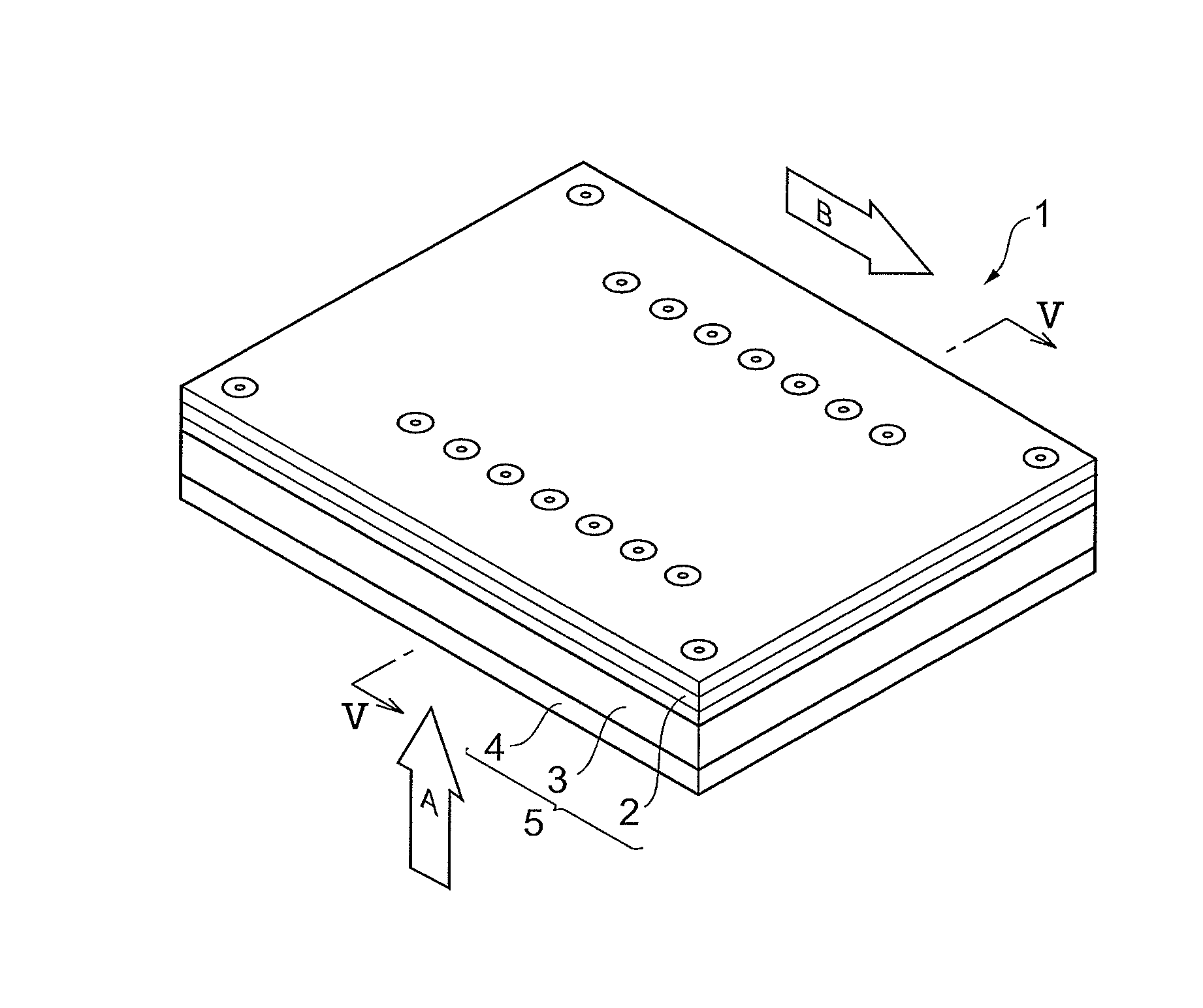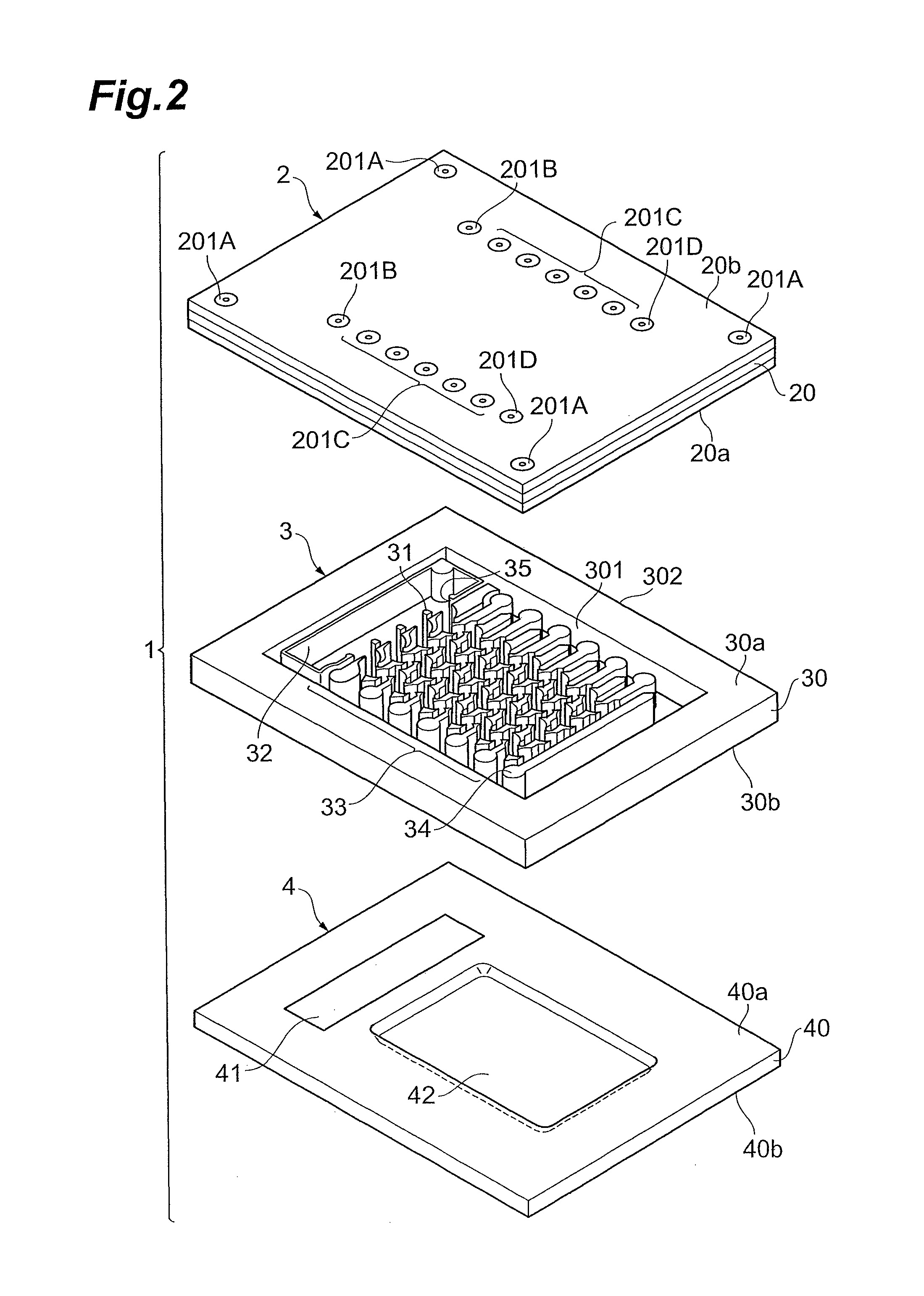Photomultiplier tube
a technology of multi-layer tubes and dynodes, which is applied in the direction of multiplier dynodes, electric discharge tubes, multi-layer electrode arrangements, etc., can solve the problems of reducing withstand voltage and withstand voltage between structures, and achieves the effect of increasing strength, and suppressing a decrease in withstand voltag
- Summary
- Abstract
- Description
- Claims
- Application Information
AI Technical Summary
Benefits of technology
Problems solved by technology
Method used
Image
Examples
Embodiment Construction
[0026]Hereinafter, a detailed description will be given for preferred embodiments of the photomultiplier tube related to the present invention by referring to drawings. In addition, in describing the drawings, the same or corresponding parts will be given the same reference numerals to omit overlapping description.
[0027]FIG. 1 is a perspective view which shows a photomultiplier tube 1 related to one preferred embodiment of the present invention. FIG. 2 is an exploded perspective view which shows the photomultiplier tube 1 shown in FIG. 1.
[0028]The photomultiplier tube 1 shown in FIG. 1 is a photomultiplier tube having a transmission-type photocathode and provided with a casing 5, that is, a housing constituted with an upper frame (a second substrate) 2, a side wall frame 3, and a lower frame (a first substrate) 4 which opposes the upper frame 2, with the side wall frame 3 kept therebetween. The photomultiplier tube 1 is an electron tube such that when light is made incident from a d...
PUM
 Login to View More
Login to View More Abstract
Description
Claims
Application Information
 Login to View More
Login to View More - R&D
- Intellectual Property
- Life Sciences
- Materials
- Tech Scout
- Unparalleled Data Quality
- Higher Quality Content
- 60% Fewer Hallucinations
Browse by: Latest US Patents, China's latest patents, Technical Efficacy Thesaurus, Application Domain, Technology Topic, Popular Technical Reports.
© 2025 PatSnap. All rights reserved.Legal|Privacy policy|Modern Slavery Act Transparency Statement|Sitemap|About US| Contact US: help@patsnap.com



